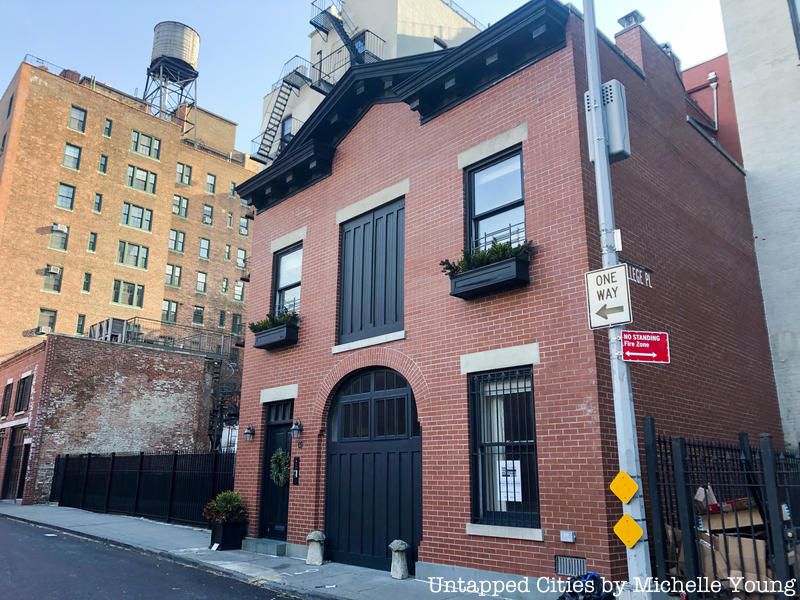A Salvaged Banksy Mural is Now on View in NYC
This unique Banksy mural goes up for auction on May 21st in NYC!


Brooklyn may be famous for its elegant brownstones, but its lesser-known brick carriage houses are just as charming. A vestige of the 19th century, these stables-turned-houses evoke memories of horse-drawn carriages trotting down cobblestone streets. There are a handful of “mews” — a row of stables, usually consisting of living quarters over carriage houses — scattered around Brooklyn Heights, Clinton Hill and Cobble Hill, but none of them are on streets as aptly named as Love Lane. Here, the echoes of the horse-drawn carriage era are brought to life by the street’s romantic name and history.
There have been a number of theories as to how Love Lane got its name. Ephemeral New York says that in pre-colonial days, the lane was an Indian trail that led to the East River. It wasn’t until the Dutch settled in Brooklyn when it became frequented by lovers going on romantic walks. According to an 1894 New York Times article:
“The oldest residents can remember a time when there was a cool and shady path leading down “Lover’s Lane,” where plump, rosy-cheeked Dutch maidens, with their sweethearts, meandered on summer evenings out through the turnstile and down the grassy bank to the water’s edge.”
Leonard Bernardo and Jennifer Weiss’ book Brooklyn By Name suggests another origin. According to them, Love Lane marked the limits of the property of the DeBevoises, a Revolutionary War-era family. The DeBevoises adopted their housekeeper’s daughter, Sarah, who was extremely popular with the local gentlemen. There was often a parade of suitors visiting the DeBevoise home, and local legend says that the name comes from the initials—fittingly called “love lines”—that Sarah and her lovers would inscribe on the fence near her house.

A carriage houses on Love Lane
In a slightly less romantic theory, the NY Daily News contends that Love Lane, which is perpendicular to College Place (where the Brooklyn Collegiate Institute for Young Ladies was located in the mid 19th century) was a popular make-out spot. Boys would park their carriages there to say one last goodbye to their girlfriends before dropping them off for the night. The ladies’ school has since closed, but the 19th century brick carriage houses on Love Lane and College Place serve as reminders of the horse-drawn carriages filled with courting teens.

Love Lane
On the real estate side, carriage houses are in high demand right now. A parking garage on adjacent College Place was recently converted into luxury condos called Love Lane Mews that are selling for $1-4 million. That’s on par with the price of coveted Brooklyn brownstones. The carriage houses may have been built for horses–a few still contain pulleys used for lifting hay bales–but these carriage houses make for surprisingly suitable homes. They’re an ideal size for one family, offer precious parking in the city and can function as workspaces for artists.
Tucked in between Brooklyn Heights’ Hicks Street and Henry Street, Love Lane is less than 500 feet long. There’s barely any car traffic passing through, allowing visitors to take a stroll on the mews-lined lane and transport themselves back to the 19th century.
To read some real life Love Lane love stories, check out this Daily News article.
Get in touch with the author @catku.
Subscribe to our newsletter